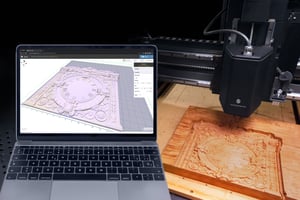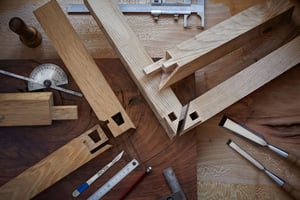Wood movement is a natural phenomenon that can impact the appearance and structural integrity of...
Innovative Storage Solutions: Designing Custom Cabinets for Maximum Organization and Efficiency

As a cabinetmaker, you have the unique ability to create custom storage solutions that meet the specific needs and preferences of your clients. Thoughtful cabinet design can transform the way people utilize their living spaces, providing organization and efficiency that makes daily life more enjoyable. In this article, we'll discuss the principles of designing custom cabinets that maximize storage and functionality.
Understanding Client Needs:
The foundation of effective cabinet design lies in understanding the unique needs and preferences of your clients. Start by discussing their priorities and pain points in terms of storage and organization. Are they struggling to find space for specific items or looking for ways to make frequently-used items more accessible? By pinpointing their needs, you can tailor your designs to provide truly personalized storage solutions.
Considering the Space:
When designing custom cabinetry, always consider the specific space in which it will be installed. Take accurate measurements and account for existing features like windows, doors, and appliances. Determine how the cabinetry can best complement the overall room layout and optimize available space.
Integrating Functional Elements:
Incorporate functional elements into your cabinet designs to provide efficient storage solutions. Consider pull-out shelves, deep drawers, or adjustable shelving to accommodate various items and make them easily accessible. Lazy Susans, vertical dividers, and built-in spice racks can be included to further enhance organization and convenience.
Evaluating Ergonomics:
Ergonomics plays a critical role in designing cabinets that are comfortable and easy to use. Pay attention to factors like countertop heights, drawer depths, and the placement of handles and knobs. Adjust these elements to suit the needs and preferences of the users, ensuring that they can comfortably access and use the storage spaces.
Balancing Aesthetics and Functionality:
While maximizing storage and functionality is essential, it's also crucial to create visually appealing cabinetry that complements the overall design of the space. Choose materials, colors, and finishes that align with the client's preferences and the room's aesthetic. Consider how the cabinet design can contribute to the room's visual harmony while still providing practical storage solutions.
Collaborating with Other Professionals:
When designing custom cabinets, it can be beneficial to collaborate with other professionals like architects, interior designers, or kitchen and bath designers. Their expertise can provide valuable insights and guidance for optimizing storage solutions within a specific space. Working together can help ensure the perfect balance between form and function.
Continuous Improvement:
As a cabinetmaker, continually seek out new ideas and inspiration for innovative storage solutions. Stay informed about industry trends, attend trade shows, and participate in educational opportunities to expand your knowledge and skill set. The more informed and experienced you are, the better equipped you'll be to create custom cabinets that maximize organization and efficiency.
Designing custom cabinets that provide innovative storage solutions is both an art and a science. By understanding your clients' needs, evaluating the available space, and incorporating functional and ergonomic elements, you can create cabinetry that transforms the way people live and interact with their surroundings. By continually improving your skills and knowledge, you can create a lasting impact through your cabinetmaking craft.



